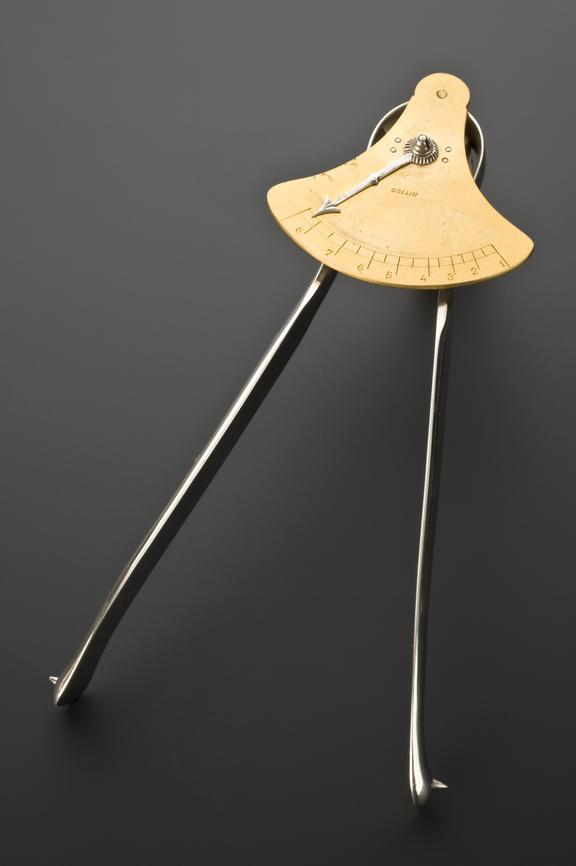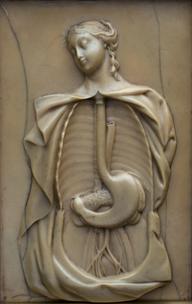





Pelvimeter,(internal) for separating and measuring the pubic arch during labour, tong-shaped with compass dial and needle at distal end, by Collin, circa 1880
A pelvimeter is a measuring device. It is used by obstetric physicians to measure the size of the birth canal during childbirth and to determine the stage of labour. It works like a pair of calipers. Contracting or releasing the calipers adjusts the measurements on a sliding scale. This scale is visible outside the mother’s body. Pelvimeters began being used towards the end of the1700s. They were part of the increasing medicalisation of childbirth during the 1700s. Obstetrics medicine deals with the care of pregnant women, childbirth, and the period of recovery from childbirth.
Details
- Category:
- Obstetrics, Gynaecology & Contraception
- Collection:
- Sir Henry Wellcome's Museum Collection
- Object Number:
- A606216
- Measurements:
-
overall: 190 mm x 70 mm x 20 mm, .097kg




